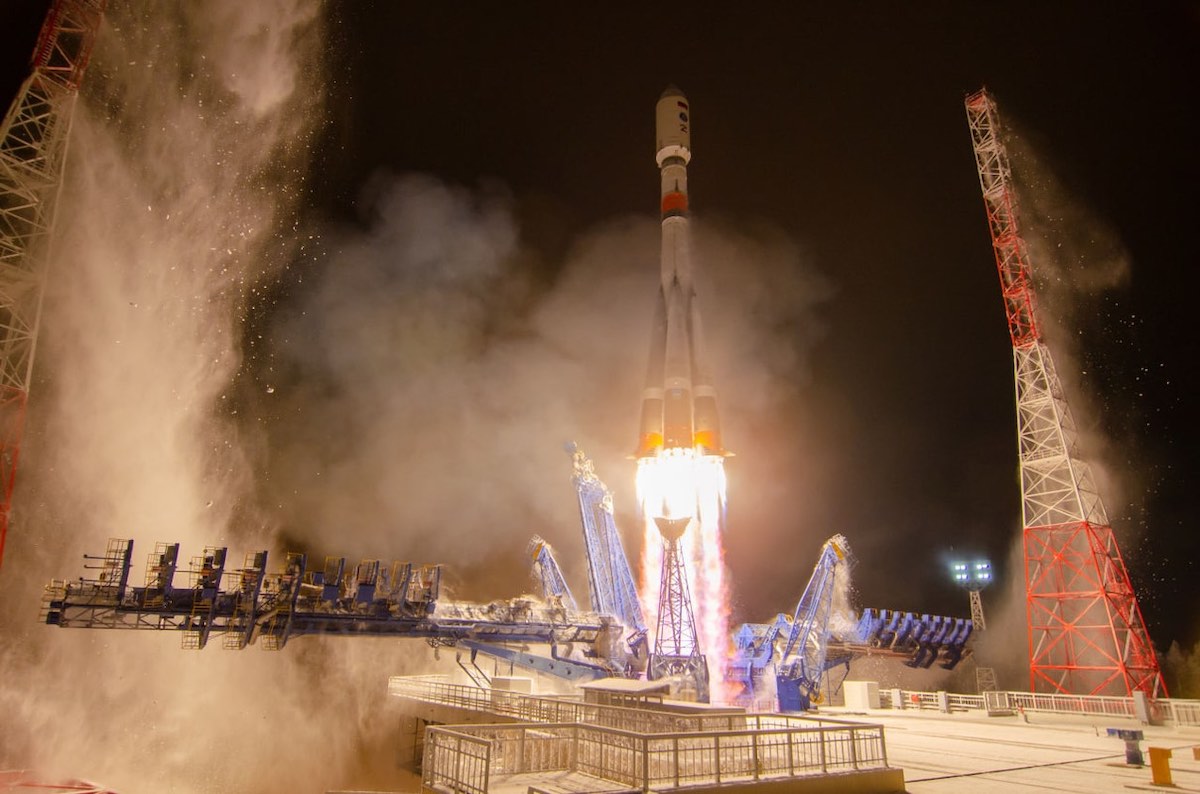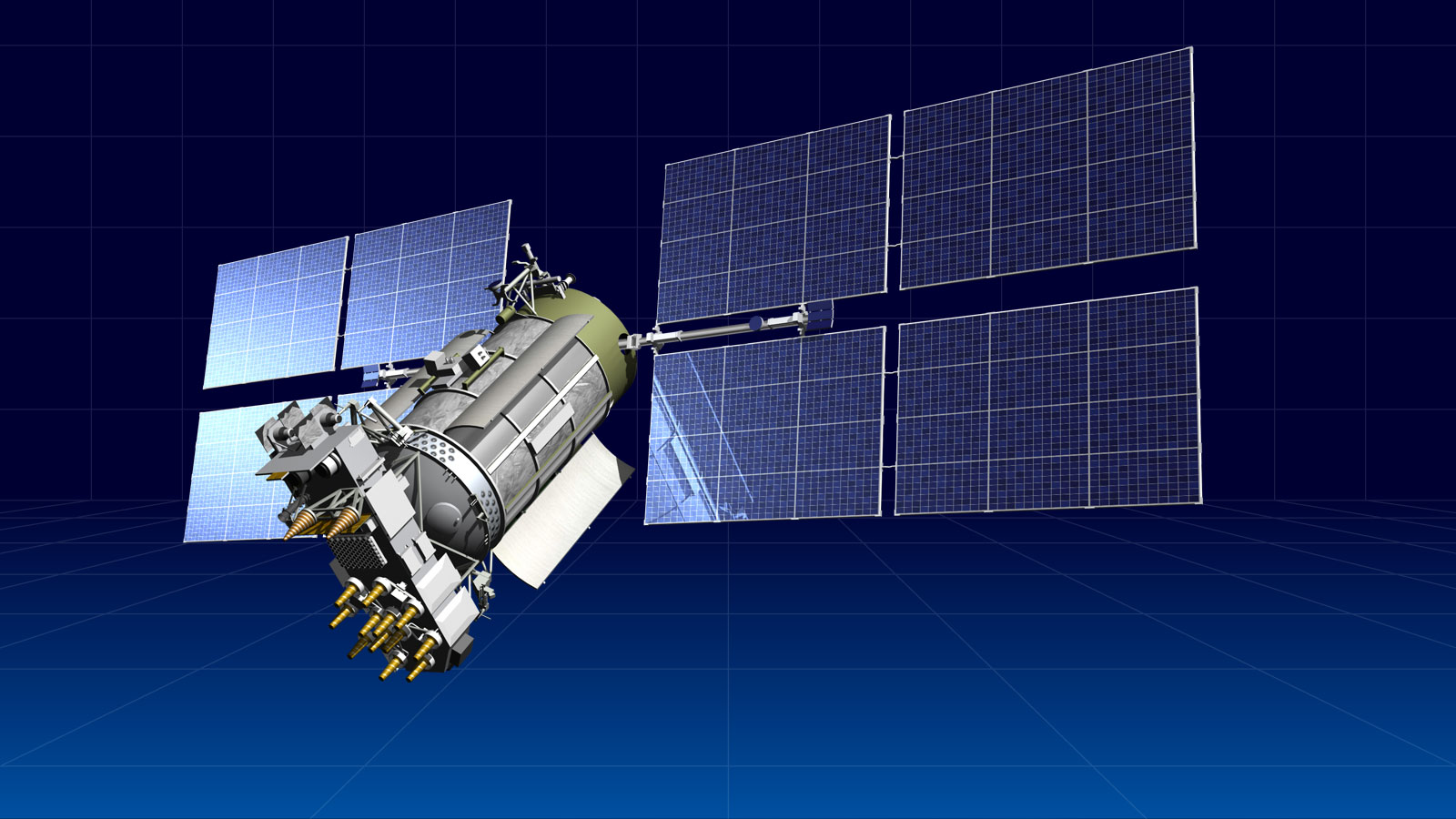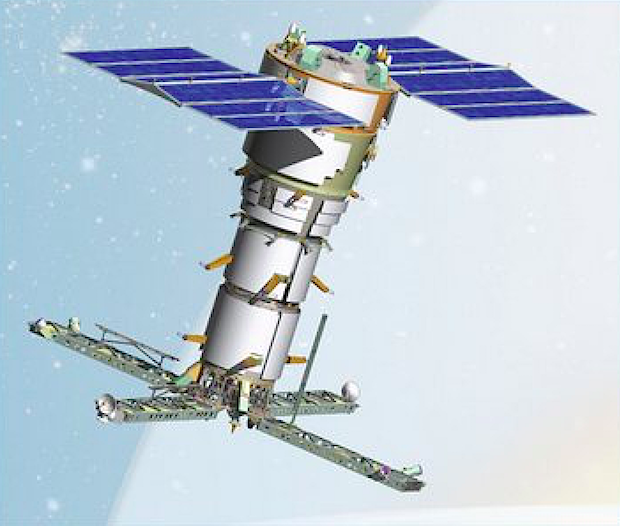
Russia launched two Soyuz rockets Nov. 28 and Nov. 30 from the country’s northern cosmodrome, hauling a Glonass navigation satellite and a military spy satellite into orbit.
The two launches from neighboring launch pads at the Plesetsk Cosmodrome, about 500 miles (800 kilometers) north of Moscow, marked Russia’s 21st and 22nd space missions of the year.
A Soyuz-2.1b rocket took off at 10:17 a.m. EST (1517 GMT) on Nov. 28 with what is expected to be Russia’s final Glonass M navigation satellite as the Glonass network transitions to a new generation of modernized spacecraft with longer lifetimes and more navigation channels.
The Soyuz rocket headed east from the Plesetsk Cosmodrome, where liftoff occurred at 8:17 p.m. local time, dropping its four kerosene-fueled boosters, core stage and payload fairing in the first few minutes of the flight. The Soyuz rocket’s third stage, powered by an RD-0124 engine, shut down around 9 minutes after liftoff and released a Fregat upper stage for two more burns to guide the Glonass M navigation satellite into its planned high-altitude perch.
The Fregat stage deployed the Glonass M satellite, designated No. 61 in the Glonass M series, around three-and-a-half hours into the mission. A statement issued by the Russian Ministry of Defense said the rocket released its payload into the targeted orbit, and ground controllers established contact with the Glonass-M satellite.
All systems aboard the spacecraft were operating normally, the defense ministry said.
U.S. military tracking data indicated the satellite was orbiting at an altitude of approximately nearly 12,000 miles (more than 19,000 kilometers), moving around Earth on a track tilted 64.8 degrees to the equator, the same type of orbit used by the rest of the Glonass fleet.
The Russian defense ministry renamed the satellite Kosmos 2564 after the launch, keeping with the naming convention for the country’s military payloads.

Built by ISS Reshetnev, a satellite manufacturer based in Zheleznogorsk, Russia, the Glonass M satellite is beginning a seven-year service life broadcasting L-band navigation signals worldwide for the Russian military and civilian users. The Glonass program is Russia’s analog to the U.S. military’s Global Positioning System, providing precise position and time information to users equipped with receivers on the ground.
With the launch of the latest Glonass satellite, the system currently consists of 25 spacecraft, according to a Russian government website tracking the navigation fleet’s operations. Twenty-two of the satellites are currently operational.
The launch of Glonass M No. 62 ends a series of Glonass M navigation satellites as Russia moves on to the newer Glonass K navigation satellite design. The Glonass M satellites began launching in 2003, and Russia’s first new-generation Glonass K satellite launched in 2011.
Two days after the Glonass M mission lifted off from Plesetsk, another Soyuz-2.1b rocket fired off a nearby launch at around 4:10 p.m. EST (2110 GMT) on Nov. 30. The Soyuz launcher followed a similar flight profile as the Glonass mission two days before, but the rocket did not carry a Fregat upper stage, meaning the Soyuz third stage released its military payload into orbit about 10 minutes after liftoff.

Russian defense officials declared the mission a success, and U.S. military radars detected the satellite in an orbit between 148 miles and 559 miles (239-by-900 kilometers).
The orbit has an inclination, or ground track angle, of 67.1 degrees to the equator. The altitude and inclination match the orbital parameters of Russia’s fleet of Lotos S1 military satellites, but Russian officials did not identify the payload on the Nov. 30 launch.
Russia’s military named the new classified spy satellite Kosmos 2565.
Since the Nov. 30 launch, the spacecraft has adjusted its orbit to reach a circular path about 560 miles above Earth. The post-launch maneuver is also typical of Lotos S1 satellites.
The Lotos S1 satellites are built by KB Arsenal, a Russian military contractor in Saint Petersburg, in partnership with TsSKB Progress. According to the manufacturer, the Lotos S1 satellites weigh around 13,000 pounds (6,000 kilograms) fully fueled at launch.

The Lotos satellites are part of Russia’s Liana military intelligence network, working in tandem with Pion-NKS satellites capable of collecting radar images of ships. The Lotos satellites host antennas to intercept radio signals that can be used to find the positions of military vehicles, including naval vessels.
Russia’s Liana electronic intelligence program is a successor to Russia’s Cold War-era Tselina, US-A, and US-P military satellites. The first Lotos test satellite launched in 2009, and six operational Lotos S1 satellites have launched since 2014.
The U.S. military’s space tracking team catalogued at least one additional object in orbit from the Nov. 30 launch, besides the presumed Lotos S1 satellite and the Soyuz third stage. The orbital data suggest at least one additional mystery payload for Russia’s military may have accompanied the Lotos S1 satellite on the mission.
Email the author.
Follow Stephen Clark on Twitter: @StephenClark1.
